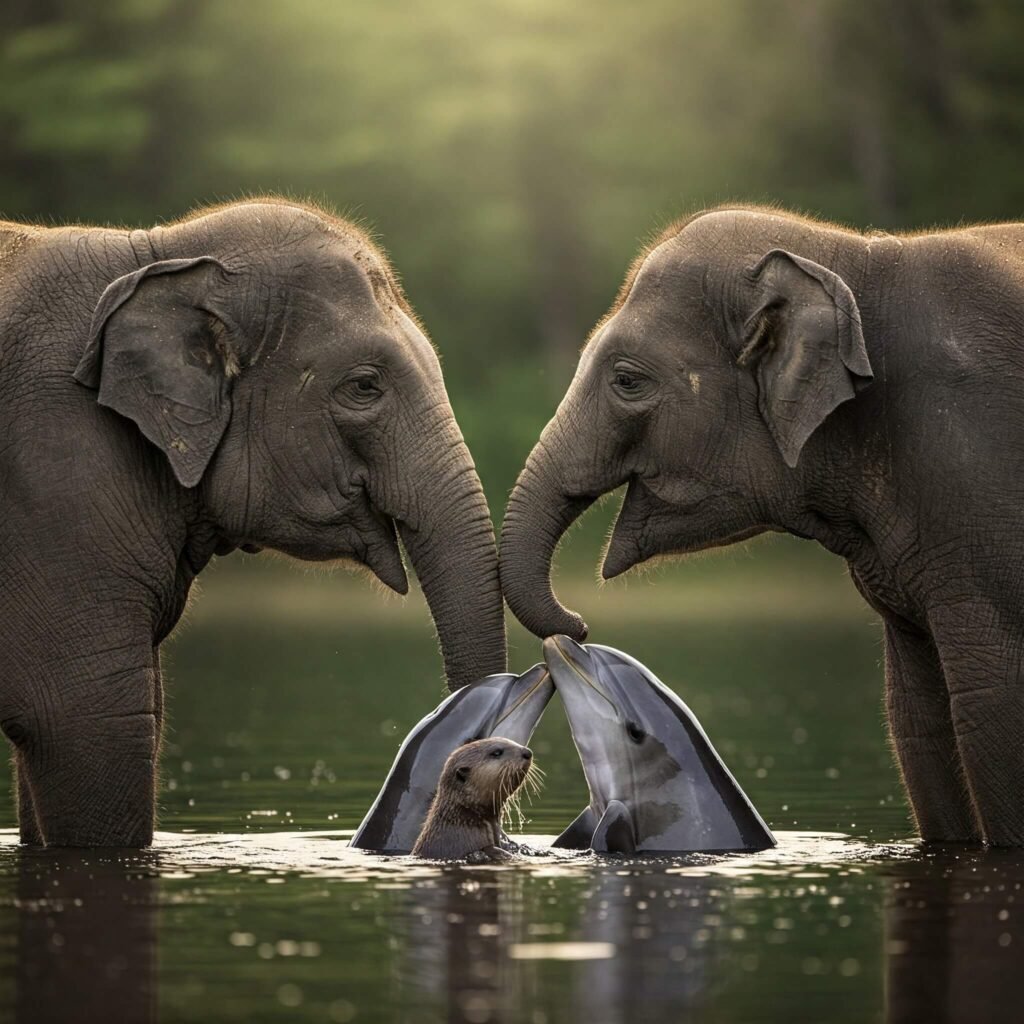As humans, we often perceive wild animals as fierce and untamed creatures, driven purely by instinct. However, the natural world is full of surprises, and some of the most seemingly formidable animals exhibit remarkable displays of affection and form unexpected bonds. Prepare to have your perceptions challenged as we delve into the heartwarming world of Affectionate Wild Animals that might just surprise you.
The Myth of the Solitary Beast: Unveiling Affectionate Wild Animals
We often picture apex predators prowling alone or large herbivores grazing in herds with little individual interaction. While survival is paramount in the wild, the capacity for affection and social bonding exists across various species. From tender family units to surprising interspecies friendships, the animal kingdom showcases a spectrum of heartwarming connections. Let’s explore some fascinating examples of these Affectionate Wild Animals and their tender interactions.
Gentle Giants: Elephants and Their Deep Family Bonds of Affection
Elephants, the largest land animals on Earth, are renowned for their intelligence and complex social structures. Their family units, led by matriarchs, exhibit profound displays of affection. These wild animal bonds showcase their bonds through:
- Physical Touch: Elephants frequently touch each other, using their trunks for gentle caresses, nuzzles, and even intertwining them as a sign of comfort and reassurance, highlighting their affectionate nature.
- Mourning the Lost: They display clear signs of grief and mourning over deceased family members, often touching and investigating the remains, a poignant display of their deep social and affectionate ties.
- Cooperative Care: Elephants collectively care for their young, with multiple females within the herd acting as “aunties” to protect and nurture the calves, demonstrating a strong sense of communal affection.

Unexpected Friendships: When Predators and Prey Show Animal Affection
Perhaps the most surprising examples of Affectionate Wild Animals involve unlikely friendships between species that are typically predator and prey, revealing unexpected instances of animal affection.
- The Story of the Leopard and the Baboon: In a remarkable instance documented in wildlife photography, a leopard was seen nurturing a baby baboon instead of preying on it. This anomaly highlights the occasional disruption of instinct by a seemingly maternal or protective impulse, showcasing surprising interspecies affection.
- Captive Bonds: While not entirely “wild,” numerous documented cases in wildlife sanctuaries show strong bonds forming between animals of different species who have been raised together. These instances offer a glimpse into the potential for interspecies affection when survival instincts are less dominant, further illustrating the capacity for wild animal bonds to form unusual ties.
(Placeholder for Image 2: A captivating image of a leopard gently nuzzling a baby baboon, illustrating an unexpected bond.)
Playful Interactions: Affection in Marine Mammals and Their Social Bonds
The ocean, too, is home to Affectionate Wild Animals. Marine mammals, known for their intelligence and social nature, often engage in playful behaviors that suggest strong bonds and animal affection.
- Dolphin Pod Dynamics: Dolphins live in complex social groups called pods and exhibit a range of affectionate behaviors, including synchronized swimming, rubbing against each other, and vocalizations that seem to express camaraderie, highlighting their social and affectionate nature as wild animal bonds.
- Otter Holding Hands: Sea otters are known for holding hands while sleeping to prevent drifting apart, a charming display of their need for closeness and security, showcasing a unique form of Affectionate Wild Animals behavior.
(Placeholder for Image 3: A delightful image of two sea otters floating on their backs while holding paws.)
Why Does Affection Exist in the Realm of Affectionate Wild Animals?
While survival is the primary driver in the wild, affection and social bonds offer significant advantages for wild animal bonds:
- Enhanced Protection: Living in groups provides increased safety from predators. Affectionate bonds strengthen group cohesion and cooperative defense among these Affectionate Wild Animals.
- Improved Resource Acquisition: Cooperative hunting or foraging can be more efficient when individuals share bonds and work together, a benefit observed in various Affectionate Wild Animals.
- Increased Survival of Offspring: Strong parental bonds and communal care significantly improve the chances of young animals surviving to adulthood, a key aspect of the affectionate behavior in many Affectionate Wild Animals.
- Stress Reduction: Social interaction and physical touch can reduce stress levels in animals, contributing to their overall well-being as observed in various studies on Affectionate Wild Animals.
Key Takeaways: Recognizing the Affectionate Side of Wildlife
The world of Affectionate Wild Animals reminds us that the natural kingdom is far more nuanced and complex than we often perceive. While the struggle for survival is ever-present, the capacity for connection, empathy, and even affection exists in surprising corners of the wild. By understanding and appreciating these bonds, we can foster a greater respect for the intricate lives of these creatures and the importance of their conservation, especially when considering the social and Affectionate Wild Animals we share our planet with.

